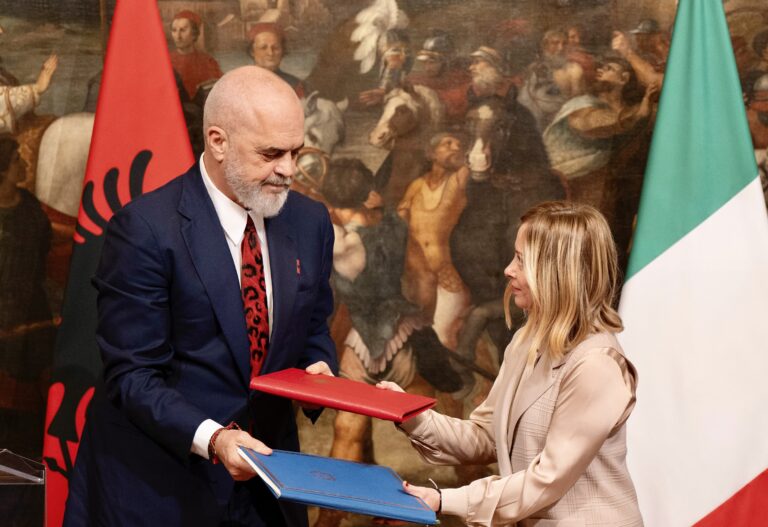For the Italian Prime Minister, the Italy-Albania agreement will represent a model of cooperation on the front of managing migratory flows. But oppositions are rising up, both in Rome and in Tirana, while the EU is waiting for the details of the pact before passing judgment.
Here are the highlights of the text of the memorandum of understanding between Italy and Albania on migrant centers.
Table of Contents
Migrants, what the Italy-Albania agreement provides for
The Italy-Albania agreement on migrant management was signed Nov. 6 by Italian Prime Minister Giorgia Meloni with Albanian Prime Minister Edi Rama.
The protocol is a 9-page, 14-article document that will remain in force “for 5 years”. Thus renewable by another 5. “Unless one of the parties gives notice within 6 months of its expiration” of its intention not to renew it.
According to the PM’s statement, it has three goals. Namely, to combat human trafficking, to prevent irregular migration flows. And to accept only those who are entitled to international protection.
What the pact provides point by point
Here, in summary, are the highlights of the pact between Rome and Tirana according to the document released by the Council presidency:
- Albania gives Italy the opportunity to use some areas in Albanian territory. Namely, the Shengjin port and Gjader area. This to set up, at its own expense and under its own jurisdiction, two facilities where it will manage the entry, temporary reception, processing of asylum applications and eventual repatriation of migrants.
- Italy pledges to return “the areas” dedicated to migrant centers at the close of the protocol.
- From spring 2024, migrants rescued in the Mediterranean by Italian ships will therefore be transferred to Albania. In an interview Meloni clarified that the agreement does not apply, however, to minors, pregnant women and vulnerable people.
- No more than three thousand migrants can be present at the centers under the Italy-Albania protocol at the same time.
- In the two centers-where staff, police forces and Italian asylum commissions will operate-the migrants will stay “as long as necessary for the procedures.”
- The facilities are managed by Italy according to relevant Italian and European regulations. Any disputes with the migrants are subject exclusively to Italian jurisdiction. Thus, jurisdiction will be Italian. While Albania will cooperate with its police forces in the security and external surveillance of the facilities.
- When title to stay in the facilities is lost, “for any cause,” Italy will immediately transfer in migrants out of Albanian territory.
- All costs of construction and management of facilities, relocation of migrants, provision of health services, will be “totally borne by the Italian side.”
- Migrants will not be allowed to leave the facilities. “The competent Italian authorities shall take the necessary measures in order to ensure the permanence of migrants within the areas. Thus preventing their unauthorized exit into Albanian territory.”












